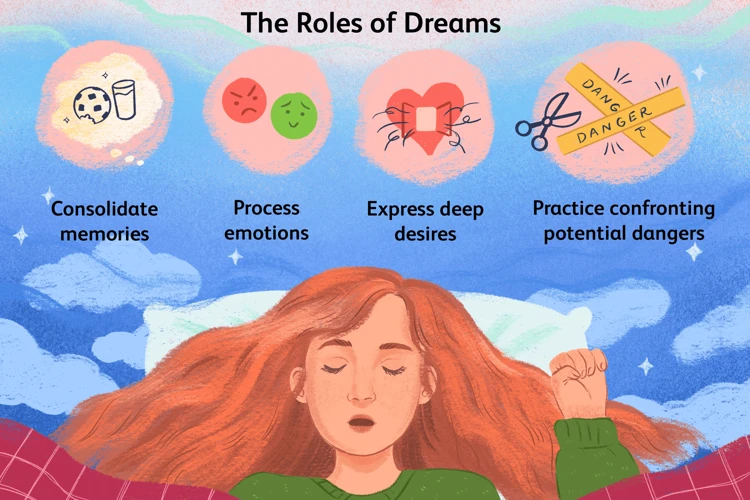Imagine being able to control and explore your wildest fantasies while you sleep. Lucid dreaming offers the captivating opportunity to do just that. But what if you could take it a step further and soar through the skies, experiencing the exhilaration of flight in your dreams? Flying dreams have long held a mystical allure, often associated with freedom and liberation. In this article, we will unravel the intriguing connection between lucid dreaming and flying dreams. Delve into the depths of your subconscious as we explore the shared elements, personal control, and inner limitations associated with this unique phenomenon. Discover techniques for inducing lucid flying dreams and uncover tips for maximizing your experience. Finally, we’ll delve into the interpretation and meanings behind these extraordinary dreams. Join us on this exhilarating journey as we navigate the mysterious world of lucid dreaming and unveil the enchanting bond between lucid dreaming and flying dreams.
Lucid Dreaming Explained

Lucid dreaming is a fascinating phenomenon that allows individuals to become aware and consciously control their dreams. It is a state where the mind achieves a heightened level of awareness while the body remains in a deep sleep. During this state, people can actively participate in and manipulate their dreams, blurring the line between imagination and reality. Lucid dreams are characterized by vividness, clarity, and a sense of self-awareness within the dream. They can range from fantastical adventures to simulations of real-life situations. In terms of the types of lucid dreams, there are three main categories: dream-initiated lucid dreams (DILD), wake-initiated lucid dreams (WILD), and the more rare and profound sleep paralysis-induced lucid dreams (SPILD). Each type presents unique experiences and challenges, offering a diverse range of exploration within the realm of lucid dreaming. So let’s delve deeper into this extraordinary phenomenon that captivates the minds of dreamers worldwide.
Definition and Characteristics
Lucid dreaming is characterized by its unique definition and distinct set of characteristics. Simply put, it is the state of being aware that you are dreaming while the dream is still occurring. This level of self-awareness allows individuals to consciously manipulate and control their dreams, making them active participants in their own sleeping fantasies. One of the key characteristics of lucid dreaming is the heightened sense of clarity and vividness experienced within the dream. The dreamer can perceive the environment, sensations, and details with a remarkable level of realism, sometimes even surpassing that of waking life. This sense of heightened awareness also extends to the dreamer’s own self, where they become fully aware of their identity and presence within the dream world. Another defining characteristic is the ability to exercise personal control over the dream, harnessing the power to shape the dream’s narrative, scenery, and even physical abilities. This control can range from something as simple as changing the scenery or conjuring objects, to more complex actions like flying, teleportation, or engaging with dream characters. The sense of freedom and agency that comes with lucid dreaming is truly unparalleled. By actively engaging with the dream environment, individuals can explore their deepest desires, confront fears, and tap into their creativity and imagination in ways that are often limited in waking life. This connection between lucid dreaming and personal expression is further explored in the meaning and symbolism of flying dreams, which represent freedom, liberation, and the unleashing of one’s creative potential. So, as we unravel the intricacies of lucid dreaming and its remarkable characteristics, we begin to understand the vast possibilities that these dreams hold.
Types of Lucid Dreams
Types of Lucid Dreams:
1. Dream-Initiated Lucid Dreams (DILD): Dream-initiated lucid dreams occur when a person becomes aware of the dream state while already immersed in a dream. They often result from spontaneous recognition of dream-like elements or anomalies within the dream. This type of lucid dream can be triggered by reality checks, such as counting fingers or testing the laws of physics within the dream. DILDs are the most common type of lucid dream and provide a gateway for beginners in lucid dreaming to explore their newfound awareness.
2. Wake-Initiated Lucid Dreams (WILD): Wake-initiated lucid dreams involve maintaining awareness as the dream state emerges from wakefulness. This type of lucid dream requires staying mentally awake while the body falls asleep. It is a delicate balance where one must maintain consciousness while allowing the body to enter a state of relaxation and sleep. Some techniques used to induce WILDs include visualization, body scanning, and deep relaxation exercises. WILDs often result in highly immersive and vivid dreams, as the individual transitions directly from waking consciousness into the dream world.
3. Sleep Paralysis-Induced Lucid Dreams (SPILD): Sleep paralysis-induced lucid dreams occur when a person becomes aware while experiencing sleep paralysis, a temporary inability to move or speak during the transition between sleep and wakefulness. These dreams can be intense and hallucinatory, with a sense of being trapped or having a presence in the room. SPILDs often involve vivid sensory experiences and can be accompanied by hallucinations or feelings of pressure on the chest. This type of lucid dream requires overcoming the initial fear and learning to navigate the dream state with control and confidence.
Diving into the realm of lucid dreaming opens up a vast landscape of experiences, and understanding the different types allows dreamers to explore and navigate their dreamscapes more effectively. Whether it’s through recognizing dream-like elements, maintaining awareness during the transition to sleep, or dealing with the unique phenomena of sleep paralysis, each type of lucid dream offers its own set of challenges and rewards. Now, let’s delve further into the captivating world of flying dreams and the connection they share with lucid dreaming. (Find more information about the meaning of flying dreams here.)
The Fascination with Flying Dreams

Flying dreams have long captivated the human imagination, stirring a sense of wonder and fascination. While dreaming of soaring through the skies may seem like a common experience, the underlying significance and symbolism behind these dreams are often profound. Typically, flying dreams are associated with feelings of freedom, liberation, and a sense of boundlessness. The act of flying represents breaking free from the constraints of reality and embracing limitless possibilities. It symbolizes the desire for independence, exploration, and the ability to rise above challenges. Flying dreams are often interpreted as expressions of one’s creativity and the unrestricted potential that lies within. The feeling of weightlessness and the ability to traverse great distances effortlessly in these dreams evoke a sense of empowerment and an escape from the limitations of the physical world. So, let your imagination take flight as we explore the symbolism and interpretations behind these captivating dreams. For more on the connection between flying dreams and creativity, check out our article on flying dreams as expressions of freedom and creativity.
Typical Interpretations
Flying dreams have long been the subject of fascination and intrigue, and they are often associated with a myriad of symbolic interpretations. One common interpretation of flying dreams is the desire for freedom and liberation. In these dreams, individuals often experience a sense of exhilaration and joy as they soar through the skies, unrestricted by the laws of gravity. Flying represents the ability to transcend limitations and break free from the constraints of everyday life. It can symbolize an escape from the mundane or a desire to rise above challenges and obstacles. Another interpretation suggests that flying dreams may reflect a sense of personal empowerment and self-confidence. These dreams can indicate a belief in one’s own abilities and a willingness to take risks and embrace new experiences. Flying represents a form of self-expression and creativity, where individuals can explore the depths of their imagination and tap into their own inner potential. Flying dreams can also be seen as a metaphor for achieving goals and aspirations. The act of flying symbolizes reaching new heights and achieving success. It signifies the ability to overcome obstacles and soar towards one’s dreams. In contrast to falling dreams, which often symbolize loss of control or fear of failure, flying dreams are seen as positive and empowering. They embody a sense of freedom, control, and optimism. To learn more about the symbolism of flying dreams, you can check out this fascinating article on the opposite symbols of flying and falling dreams.
Symbolism of Flight
The symbolism of flight in dreams is both profound and multi-faceted. Throughout history, flying has been associated with freedom, liberation, and transcendence. In dreams, flight represents a sense of empowerment, breaking free from the constraints of gravity and earthly limitations. It signifies the ability to rise above obstacles, gain a broader perspective, and embrace new possibilities. Flying dreams often evoke feelings of exhilaration, joy, and liberation, as if the dreamer is unburdened by the constraints of the physical world. This powerful symbolism of flight can also represent a longing for escape, a desire for emotional or psychological release from everyday challenges. Flying dreams can be seen as a metaphor for personal growth and transformation, as the dreamer explores new horizons and reaches for higher aspirations. Additionally, flight in dreams can symbolize the pursuit of knowledge, enlightenment, and spiritual awakening. It reflects the yearning to explore the depths of one’s consciousness, unlocking hidden potential and expanding horizons of perception. The symbolism of flight is deeply ingrained in our collective unconscious, transcending cultures and generations. It serves as a powerful reminder of the limitless possibilities that exist within our dreams and our waking lives.
The Lucid Dreaming-Flying Connection

Within the realm of lucid dreaming, a special and enchanting connection exists between lucid dreaming and flying dreams. This connection is fueled by the shared elements and experiences that arise when one gains control over their dreamscape. When lucid dreaming, individuals often find themselves effortlessly taking flight, soaring through the skies with a sense of wonder and freedom. This ability to fly in dreams goes beyond the limitations of the physical world, providing a surreal experience that taps into the depths of imagination and possibility. From traversing vast landscapes to performing awe-inspiring acrobatics, the act of flying in a lucid dream becomes a metaphorical representation of personal control and freedom. It allows individuals to explore their inner limitations and push the boundaries of their perceived reality. The lucid dreaming-flying connection is a testament to the awe-inspiring capabilities of the human mind and its ability to unlock extraordinary experiences within the realm of dreams.
Shared Elements and Experiences
Shared elements and experiences in lucid flying dreams contribute to the enchantment and wonder associated with this phenomenon. In these dreams, individuals often report similar sensations and visuals that accompany the experience of flight. The feeling of weightlessness, the rush of wind against their skin, and the panoramic views of the world below are commonly cited elements. The ability to effortlessly soar through the sky, defying gravity, taps into a deep sense of freedom and liberation. Many dreamers describe a sense of exhilaration and empowerment as they navigate the open skies. Additionally, the images and landscapes encountered during lucid flying dreams can vary, with some individuals exploring familiar earthly landscapes while others venture into mystical or surreal realms. These shared elements create a sense of communal experience, connecting individuals who have embarked on this extraordinary journey through the depths of their subconscious. It is this collective thread that adds to the allure and fascination of lucid flying dreams, providing a sense of camaraderie among dreamers who have tasted the exhilaration of flight.
Personal Control and Freedom
In the realm of lucid dreaming, one of the most captivating aspects is the sense of personal control and freedom that it offers. During lucid dreams, individuals are not bound by the laws of the physical world, allowing them to defy gravity and experience the exhilaration of flight. This sense of freedom extends beyond just flying, as lucid dreamers have the ability to manipulate and shape their dream environment according to their desires. They can conjure up any scenario, create fictional worlds, or interact with dream characters in any way they choose. The level of control can vary from one dreamer to another, but the common thread is the empowering feeling of being able to fully navigate and explore the dream landscape. Lucid dreaming grants individuals the opportunity to push the boundaries of their imagination and experience a level of personal agency that is often absent in waking life. It serves as a playground for creativity and self-expression, where imaginations can run wild and limitations cease to exist. The exhilarating feeling of personal control and freedom in lucid dreams is truly liberating, providing a glimpse into the infinite possibilities of the human mind.
Personal control and freedom in lucid dreams are not just limited to the dream world; they can also have a profound impact on the waking life of individuals. The sense of empowerment and agency experienced during lucid dreaming can spill over into one’s daily life, fostering a mindset of confidence and autonomy. Lucid dreamers often report an increased sense of self-awareness and the ability to confront and overcome personal fears and limitations. By actively engaging with and manipulating their dreams, individuals can gain insights into their subconscious, uncovering hidden beliefs and psychological barriers that may restrict them in waking life. This process of self-discovery and self-transformation can lead to personal growth and development, as lucid dreamers learn to confront and overcome their inner limitations. The sense of personal control and freedom in lucid dreams not only offers an exhilarating and immersive experience, but it also has the potential to positively impact one’s waking life, fostering personal growth, and empowerment.
References:
– Meaning of Flying Dreams
– Flying Dreams: Freedom, Expression, Creativity
– Flying vs Falling Dreams: Opposite Symbols?
Exploring Inner Limitations
In the realm of lucid dreaming, exploring inner limitations is a significant aspect that often emerges during flying dreams. These dreams provide a unique opportunity to push the boundaries of what we believe is possible and challenge any self-imposed restrictions. When we become lucid in a dream and take flight, we experience a profound sense of freedom and liberation. Flying effortlessly through the sky allows us to break free from the constraints of gravity and any perceived limitations in our waking lives. It becomes a symbolic representation of overcoming obstacles, fears, and insecurities that may hold us back in our everyday existence. As we soar through the dream world, we are confronted with the notion that we have the power to overcome our inner limitations and achieve extraordinary feats. This realization can have a transformative effect on our waking lives, as we are reminded that we possess the ability to rise above challenges and pursue our dreams with unwavering determination. The act of exploring inner limitations in lucid flying dreams serves as a catalyst for personal growth, self-discovery, and the realization of our true potential. So, embrace the opportunity to soar through the skies in your lucid dreams and allow them to inspire you to break free from your inner confines in pursuit of a more fulfilling and empowered existence.
Techniques for Inducing Lucid Flying Dreams

If you’re eager to experience the thrill of lucid flying dreams, there are several techniques you can try to increase your chances of success. Reality testing is a fundamental approach that involves questioning the nature of reality throughout the day. By regularly asking yourself, “Am I dreaming?” and performing reality checks, such as looking at your hands or trying to push your finger through a solid object, you enhance your ability to recognize when you are dreaming. Another effective technique is Dream Journaling, where you record your dreams immediately upon waking up. This practice helps to improve dream recall and allows you to identify dream patterns that can serve as dream signs. Mnemonic Induction of Lucid Dreams (MILD) involves setting a clear intention to have a lucid dream while falling asleep. This method often combines visualizing yourself becoming lucid in a dream and rehearsing your desired dream scenario. For those who prefer a more direct approach, Wake Induced Lucid Dreams (WILD) involves maintaining awareness as you transition from wakefulness to dreaming. This technique requires patience and practice but can lead to vivid and immersive lucid flying experiences. By experimenting with these techniques, you can increase your chances of having awe-inspiring lucid flying dreams that will take you to soaring heights in the realm of your subconscious.
Reality Testing and Dream Journaling
Reality testing and dream journaling are two essential techniques that can greatly enhance the likelihood of inducing lucid flying dreams. Reality testing involves regularly questioning your reality throughout the day to determine whether you are awake or dreaming. By forming a habit of questioning your surroundings, performing reality checks such as trying to push your finger through your palm or asking yourself if you are dreaming, you increase your chances of carrying out these reality tests in your dreams as well.
Dream journaling, on the other hand, involves keeping a record of your dreams in a journal immediately upon waking. This practice helps improve dream recall and provides valuable insights into the patterns and themes of your dreams. In relation to lucid flying dreams, dream journaling allows you to identify common elements or triggers that may lead to these experiences. Keeping a detailed account of your dreams also serves as a reminder to actively engage with your dreams and increase your awareness of the dream state.
Combining reality testing with dream journaling can be particularly effective for inducing lucid flying dreams. For example, you could incorporate reality checks related to flight, such as attempting to levitate or jump and hover in the waking state. By practicing these reality tests consistently, you are more likely to carry them out automatically in your dreams, triggering lucidity and the possibility of experiencing flying dreams.
Additionally, when recording your dreams in a journal, pay close attention to any moments of flight or flying-related symbols. By recognizing recurring patterns or symbols associated with flight in your dreams, you can direct your intention towards having lucid flying dreams. Make a habit of visualizing yourself flying during your waking hours as well, reinforcing the desire and expectation for this experience in your dreams.
Reality testing and dream journaling are invaluable tools for increasing the likelihood of lucid flying dreams. By regularly questioning your reality and keeping a detailed record of your dreams, you can enhance your self-awareness, identify dream patterns, and actively direct your subconscious towards the exhilarating experience of soaring through the skies in your lucid dreams.
Mnemonic Induction of Lucid Dreams (MILD)
Mnemonic Induction of Lucid Dreams (MILD) is a powerful technique used to induce and enhance lucid dreams. Developed by renowned psychologist Stephen LaBerge, MILD focuses on increasing dreamers’ self-awareness through the use of mnemonics, or memory aids. The process involves setting intentions and repeating a mantra or affirmation before falling asleep. The key to MILD is to create a strong connection between the intention to become lucid and the act of dreaming itself. To successfully use MILD, follow these steps:
1. Recall Past Dreams: Before going to bed, spend a few minutes recalling your most recent dreams or any recurring dream signs. This helps prime your mind for the upcoming dream experience.
2. Set Your Intention: As you lay in bed, repeat a phrase or affirmation that indicates your desire to become lucid in your dreams. For example, “Tonight, I will realize I am dreaming” or “I am aware and in control of my dreams.”
3. Visualize Your Dream: Imagine yourself in a scenario where you become lucid, preferably one connected to your recurring dream signs. Visualize yourself recognizing the dream, maintaining your awareness, and engaging in your desired actions.
4. Fall Asleep with the Mantra: As you drift off to sleep, continue mentally repeating your chosen mantra while also holding the image of becoming lucid in your mind. The repeated focus on your intention increases the likelihood of achieving lucidity.
5. Perform Reality Checks: Throughout the day, conduct reality checks by questioning whether you are in a dream or reality. This habit will carry over into your dreams, leading to greater lucidity.
MILD is an effective technique for inducing lucid dreams, particularly for individuals who have a tendency to wake up after dreams or during the night. By incorporating these steps into your bedtime routine and maintaining consistency, you can significantly enhance your chances of experiencing lucid dreams through the mnemonic induction of lucid dreams (MILD) technique.
Wake Induced Lucid Dreams (WILD)
Wake Induced Lucid Dreams (WILD) is a technique that involves transitioning directly from wakefulness into a lucid dream state. This method requires a delicate balance of relaxation and focus. To initiate a WILD, individuals must find a comfortable position and relax their body, allowing it to enter a state of deep relaxation while keeping the mind awake and alert. One common practice is to concentrate on a single point of focus, such as the breath or a specific visual image. As the body drifts off to sleep, the mind remains conscious, creating a bridge between wakefulness and dreaming. This transitional phase can be accompanied by various sensory experiences, such as auditory hallucinations or a sensation of floating. It is important to maintain mental clarity and stability during this process, as it can be easy to slip into a regular dream or lose consciousness. With practice and patience, WILD can provide an incredibly immersive and vivid lucid dreaming experience, allowing dreamers to have full control over their dream environment and actions. Remember that each individual may have their own variations and techniques for inducing WILD, so experimentation and adaptation may be necessary to find what works best for you in achieving these extraordinary dreams.
Experiencing Lucid Flying Dreams: Tips and Tricks

Experiencing lucid flying dreams can be an exhilarating and transformative journey within the realm of lucid dreaming. To enhance your chances of having these awe-inspiring dreams, there are several tips and tricks to consider. Firstly, dream stabilization techniques such as rubbing your hands together or spinning in the dream can help maintain lucidity and prevent waking up. Additionally, cultivating a sense of belief and confidence in your ability to fly can greatly enhance your flying experiences in dreams. Visualization exercises, both during waking hours and before sleep, can assist in developing a strong mental connection to the sensation of flying. Practicing reality checks and keeping a dream journal can improve dream recall and increase lucidity. By regularly questioning your reality throughout the day and documenting your dreams upon waking, you heighten your awareness and improve your chances of recognizing when you are in a dream state. These techniques, combined with a sense of curiosity and open-mindedness, can unlock the exhilarating and awe-inspiring experience of lucid flying dreams, allowing you to soar through boundless skies with absolute freedom.
Dream Stabilization Techniques
One of the crucial aspects of lucid dreaming is dream stabilization. Once you become aware that you are dreaming, it is essential to maintain the dream state and prevent yourself from waking up prematurely. Dream stabilization techniques can help prolong and enhance your lucid dreams, allowing you to fully immerse yourself in the experience.
1. Engage your senses: To stabilize your dream, focus on engaging your senses. Take a moment to observe your surroundings and pay attention to the details. Touch objects in your dream, feel their texture, and notice any sensations. Listen for sounds, whether it’s the wind rustling through trees or the voices of people around you. By actively engaging your senses, you anchor yourself in the dream, making it feel more real and stable.
2. Stay calm: Excitement and heightened emotions can sometimes disrupt the stability of a lucid dream. Practice staying calm and composed within the dream. Remind yourself that you have control over the dream environment and that you can explore it at your leisure. Take slow, deep breaths and maintain a relaxed state of mind. This will help you maintain stability and prevent the dream from fading away.
3. Focus on your dream body: Directing your attention to your dream body can help stabilize the dream. Look down at your hands or feet and notice the details. Wiggle your fingers and toes, feeling the movement and physical sensations. This helps anchor your awareness in the dream body and keeps you connected to the dream world.
4. Maintain clarity: Sometimes, the dream environment may start to blur or fade. To stabilize the dream, try rubbing your hands together vigorously. This physical movement and the sensation of friction can help sharpen your focus and bring clarity back to the dream. You can also try spinning around in the dream or touching solid surfaces to maintain stability.
5. Use verbal commands: Asserting control through verbal commands can also stabilize the dream. State aloud what you want to happen or command the dream to remain stable and vivid. By vocalizing your intentions, you reinforce your control over the dream and help maintain its stability.
Remember, practice is key when it comes to dream stabilization techniques. Experiment with different methods and find what works best for you. With time and experience, you’ll become more adept at prolonging and stabilizing your lucid dreams, allowing for more profound and immersive dream experiences.
Enhancing Flying Abilities
Once you have achieved lucid flying dreams, you may want to enhance your flying abilities to make the experience even more exhilarating and immersive. Here are some techniques and practices that can help you soar to new heights:
1. Visualize and Believe: Before embarking on your dream flight, take a moment to visualize yourself effortlessly soaring through the skies. Envision yourself as a bird, a superhero, or any creature that can effortlessly navigate the air. By believing in your ability to fly and visualizing it, you create a powerful mindset that can enhance your flying experience.
2. Focus on Body Sensations: Pay attention to the sensations you feel while flying in your lucid dream. The feeling of the wind against your skin, the rush of adrenaline, and the freedom of movement. By focusing on these sensations and immersing yourself in the experience, you can enhance the realism and intensity of your dream flight.
3. Experiment with Different Techniques: Just like in the waking world, different flying techniques can yield varied results in your lucid dreams. Try different methods such as flapping your arms like wings, using propulsion from your feet, or mentally levitating. Explore what feels most natural and enjoyable to you, and experiment with different techniques to enhance your flying abilities.
4. Engage Your Senses: Make your lucid flying dreams even more vivid by engaging your senses. Notice the sights around you, the colors of the sky, and the scenery below. Listen to the sounds of the wind, the birds, or any other ambient noise. By actively engaging your senses, you can heighten the overall experience and make it more immersive.
5. Practice Dream Control: Lucid dreamers who are skilled at dream control can manipulate their dreams at will. As you become more proficient in lucid dreaming, you can begin to experiment with altering the laws of physics in your dream world. This can include defying gravity, changing the speed of your flight, or even teleporting yourself to different dreamscapes.
Remember, enhancing your flying abilities in lucid dreams may require practice and experimentation. Keep a dream journal to track your progress, and don’t get discouraged if it takes time to master certain techniques. With dedication and persistence, you can unlock the full potential of your dream flights and experience the thrill of limitless freedom in the dream world.
Interpreting Lucid Flying Dreams
Interpreting lucid flying dreams can be a thought-provoking endeavor, as they hold symbolic and personal meanings that vary from individual to individual. From a psychological perspective, flying in dreams is often associated with feelings of freedom, transcendence, and breaking free from constraints. It can represent the desire for liberation, a sense of empowerment, or the need to escape from difficult circumstances. On a personal level, the meaning of flying dreams can be deeply subjective, as they can reflect one’s own aspirations, hopes, and fears. For some, flying may symbolize a desire for adventure and exploration, while for others, it may signify a longing for control and mastery over their own lives. Additionally, the specific details and emotions experienced during the dream play a significant role in interpreting its meaning. By analyzing the symbolism and considering one’s own experiences and emotions, individuals can gain insights into their subconscious desires and motivations. Whether seen as a metaphorical journey or a moment of personal revelation, lucid flying dreams offer a unique opportunity for self-discovery and reflection. So, let your imagination take flight as you explore the depths of your dreams and uncover the hidden meanings within.
Psychological Perspectives
Psychological Perspectives on lucid flying dreams delve into the deeper meanings and interpretations behind these extraordinary experiences. One perspective suggests that lucid flying dreams represent a sense of empowerment and liberation. In such dreams, individuals can break free from the constraints of reality and experience a sense of personal freedom and control. It symbolizes the ability to rise above challenges and limitations in waking life, giving individuals a sense of empowerment and optimism.
Another psychological perspective focuses on the symbolism of flight itself. Flying dreams often represent a desire for escape, the need for a change in perspective, or the pursuit of one’s goals and ambitions. In this context, lucid flying dreams can be seen as the manifestation of a deep yearning for personal growth and self-actualization. They can symbolize the courage to explore uncharted territories, take risks, and transcend perceived limitations. Flying in dreams can also symbolize the exploration of one’s inner self and the search for higher consciousness.
Psychological interpretations may explore the emotions and sensations experienced during lucid flying dreams. Feelings of exhilaration, joy, and a sense of weightlessness can reflect a desire for emotional liberation and a break from the mundane aspects of daily life. It is often associated with a sense of awe and wonder, as the dreamer experiences a unique and awe-inspiring perspective of the world. In this sense, lucid flying dreams can serve as a source of inspiration and emotional rejuvenation, providing individuals with a renewed sense of purpose and passion.
These psychological perspectives offer valuable insights into the profound impact that lucid flying dreams can have on an individual’s psyche. They emphasize the personal and symbolic meanings that can be derived from these dreams, highlighting the importance of self-reflection and introspection. By exploring these perspectives, individuals can gain a deeper understanding of their own desires, aspirations, and emotional states, ultimately leading to personal growth and self-discovery.
Personal and Symbolic Meanings
The personal and symbolic meanings behind lucid flying dreams can vary greatly from person to person. Each individual brings their own unique experiences, beliefs, and subconscious associations into their dream world. When it comes to interpreting these dreams, it is essential to consider the dreamer’s personal history, emotions, and current life circumstances. Flying dreams often symbolize a sense of freedom, liberation, and empowerment. They can represent the desire to break free from limitations or to overcome obstacles in waking life. For some, flying dreams may reflect a need for more control in their lives or a desire to escape from stress or responsibilities. The act of flying can also symbolize a sense of achievement or ambition, as well as a feeling of being on top of the world. Additionally, the experience of flying in dreams can be deeply transformative and may reflect the dreamer’s journey of self-discovery or personal growth. It is important to approach the interpretation of these dreams with an open mind and to explore the personal and symbolic significance within the unique context of each individual’s life.
Conclusion
In conclusion, the connection between lucid dreaming and flying dreams is a captivating topic that holds immense intrigue. Through our exploration, we have uncovered the shared elements and experiences between the two phenomena, such as the sensation of personal control and freedom that comes with both lucid dreaming and flying dreams. These dreams provide a unique opportunity for individuals to step beyond their perceived limitations and explore the depths of their subconscious. By utilizing various techniques like reality testing, dream journaling, and mnemonic induction, dreamers can increase their chances of experiencing lucid flying dreams. Once achieved, it is essential to employ dream stabilization techniques to prolong and enhance the flying experience. Interpretation of lucid flying dreams can vary, with psychological perspectives offering insights into hidden desires, while personal and symbolic meanings provide a glimpse into the individual’s inner world. Ultimately, the enigmatic world of lucid dreaming and flying dreams offers a gateway to self-discovery, creativity, and a sense of liberation. Embrace this enchanting journey into the realm of dreams and unlock the boundless potential that lies within.
Frequently Asked Questions
What is the difference between lucid dreaming and regular dreaming?
Regular dreaming occurs when we are asleep and unaware that we are dreaming. Lucid dreaming, on the other hand, is when we become consciously aware that we are dreaming and can actively control the dream’s content and direction.
Can anyone learn to have lucid dreams?
Yes, with practice and various techniques, most people can learn to have lucid dreams. It may take time and effort, but it is a skill that can be developed.
Are there any benefits to lucid dreaming?
Absolutely! Lucid dreaming can offer a range of benefits, such as enhancing creativity, improving problem-solving skills, overcoming fears and nightmares, and providing a platform for personal growth and self-exploration.
How can I increase my chances of having lucid dreams?
There are several techniques you can try to increase your chances of having lucid dreams. These include reality testing, keeping a dream journal, practicing meditation and mindfulness, and utilizing mnemonic induction of lucid dreams (MILD) or wake-induced lucid dreams (WILD) techniques.
What is the connection between flying dreams and lucid dreaming?
Flying dreams and lucid dreaming are often interconnected as many people experience flying in their lucid dreams. Flying dreams can also serve as a trigger for becoming lucid, as the act of flying can cause individuals to question the reality of the dream.
Is it possible to control the act of flying in lucid dreams?
Absolutely! One of the perks of lucid dreaming is the ability to have complete control over your dreams, including the act of flying. With lucidity, you can soar through the sky, perform incredible aerial acrobatics, and explore new heights.
What are reality testing and dream journaling?
Reality testing involves performing regular checks to see if you are dreaming or awake. It can include looking at clocks or texts repeatedly, trying to push your finger through your palm, or questioning the reality of your surroundings. Dream journaling involves recording your dreams as soon as you wake up, which helps improve dream recall and increases your overall dream awareness.
Are flying dreams just about freedom?
Flying dreams can have various interpretations and meanings, but freedom is a common theme associated with them. They often symbolize liberation, independence, and the breaking of boundaries or limitations.
Can lucid flying dreams help overcome fears and limitations?
Yes, exploring and experiencing lucid flying dreams can be a powerful tool for overcoming fears and limitations. It allows individuals to confront their fears in a controlled environment and gain a sense of empowerment and confidence.
Do psychologists study lucid dreaming?
Absolutely! Psychologists have been studying lucid dreaming for decades. They analyze the psychological and cognitive aspects of lucid dreaming, as well as its potential applications in therapy and personal development.








